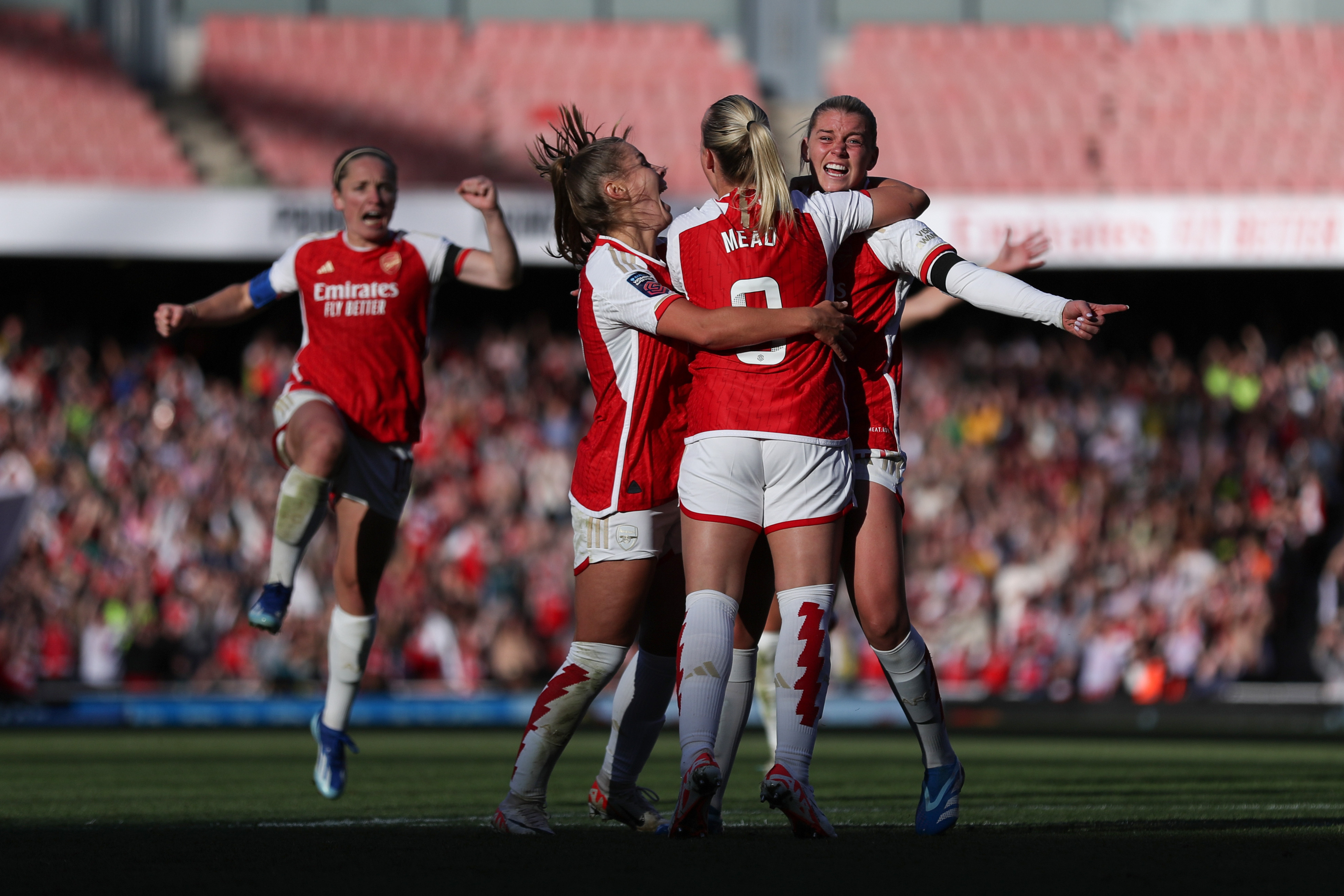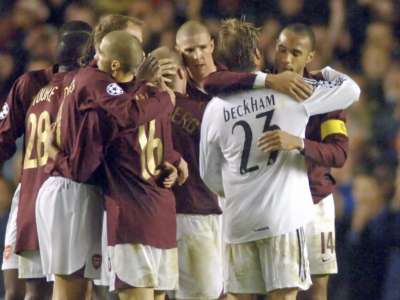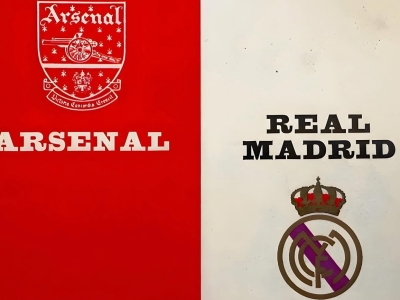Introduction
Arsenal began this season with high hopes for what they could achieve under relatively new management in Jonas Eidevall. Their summer recruitment involved big signing Alessia Russo, as well as other key players in Amanda Ilestedt, Laia Codina, Cloe Lacasse and Kyra Cooney-Cross. Later in the season they also signed US international Emily Fox, with Sarah Bouhaddi also brought in for goalkeeper cover.
A positive transfer window meant the season started optimistically, and despite a short pre-season Arsenal had key fixtures in the Champions League qualifying stage to play.
The WSL season then began with a sell-out game at the Emirates against Liverpool, a sign of what was to come for Arsenal as they broke many attendance records throughout the season.
Women’s Super League
Arsenal finished third in the WSL table on 50 points, five points behind Manchester City and Chelsea. This is 3 more points than last season, but still disappointing, despite achieving Champions League qualification.
Arsenal won 16 of 22 games, notably beating Chelsea 4-1 at the Emirates and doing the double over Manchester City, beating them 2-1 both home and away. Arsenal’s two draws this season came against Manchester United early on and Everton in one of the final games.
Arsenal did well to get a draw out of the game against Manchester United through a late equaliser from Lacasse, and conceded late on against Everton to drop points in that game.
The real issue for Arsenal this season came due to the games they lost. Their four losses involved a 3-1 loss to Chelsea, 2-1 loss to West Ham, 1-0 loss to Spurs, and a 1-0 loss to Liverpool. Although Chelsea were always going to be a difficult opponent, the manner in which Arsenal lost was extremely disappointing, a poor defensive performance despite beating them confidently earlier on in the season.
The other three losses were to opponents Arsenal should have beaten, and came through the same inability to take their chances and remain defensively solid.
Champions League
In order to qualify for the Champions League group stage, Arsenal had to play qualifying fixtures, the first against Linkoping, which Arsenal won confidently with a 3-0 victory. Following this game Arsenal came up against Paris FC, drawing 3-3 and then losing 4-2 on penalties.
The season had barely begun and Arsenal were already out of the running for one major trophy. One of the apparent reasons for Arsenal’s defeat in this game was a lack of pre-season; the team had barely played together and needed more time to form relationships on the pitch.
Despite this, a team like Arsenal should always be competing in this competition, especially following their campaign last season where they reached the semi-final. They only narrowly lost to Wolfsburg despite top performances from Arsenal in both legs.
FA Cup
Arsenal began their FA Cup campaign in the fourth round against Watford, where they achieved a 5-1 victory. A tough draw meant they came up against Manchester City in the fifth round, a team on the rise and growing in confidence, ultimately costing Arsenal, who exited the competition following a 1-0 loss.
Despite having more possession and shots than Manchester City in the game, City were defensively solid and a world class performance from Keating earned them a clean sheet. Arsenal were out of another competition.
Conti Cup
Last season Arsenal took on Chelsea in the Conti Cup final, achieving a 3-1 win and earning a trophy for Jonas Eidevall and his team.
Their campaign this season began in the group stage, which they took part in due to their lack of inclusion in the Champions League. Arsenal beat Bristol City 3-1, Southampton 2-1, Tottenham 4-3 on penalties and Reading 5-0, awarding them top place in the group. They beat London City Lionesses 4-0 in the quarter-finals and Aston Villa 4-0 in the semi-final.
As they approached the final against Chelsea it was always going to be a difficult task. Both teams pushed for a winner but it was Arsenal who came out on top in extra-time, a late Stina Blackstenius goal won them the game.
Arsenal won their second trophy under Eidevall and their first and only this season.
Summary of stats
Alessia Russo, Caitlin Foord, Victoria Pelova and Steph Catley all played the most games for Arsenal in the WSL this season (22), with Russo playing the most minutes (1727), just in front of Katie McCabe (1652) and Manuela Zinsberger (1620).
Russo had the most WSL goals (12), then Beth Mead (8) and Stina Blackstenius (7). Pelova had the most WSL assists (5), followed by Russo, Mead and Caitlin Foord (4).
In all WSL games this season, Arsenal scored 49 goals from 431 shots (136 shots on target). Their shots on target (%) was 31.6%.
If we compare that to Chelsea, they scored 69 goals from 425 shots (167 shots on target). Despite having less shots, Chelsea had more shots on target and a better shots on target (%) of 39.3%. Manchester City also had more goals (58) and more shots on target (176) despite less shots (421), with the highest shots on target (%) out of the three teams at 41.8%.
As we will discuss in the key tactics section to follow, Arsenal struggled to score goals when needed, weren’t clinical enough in front of goal when other top teams were. This explains why they fell short in the WSL title race, and were unable to progress in the FA Cup.
Summary of key tactics
Arsenal have been criticised for a number of different key things this season - predictability, lack of versatility and lack of goals, not clinical enough in the box, ultimately costing them games.
Jonas Eidevall’s system is quite rigid, dependent on certain players performing certain roles and he often favours utilising players who suit that system.
Compared to teams such as Manchester City, who performed better than Arsenal this season, there has been a lack of consistency in starting personnel, not sticking to one starting XI. This allowed Eidevall to experiment playing different players together in different positions, with an emphasis on forming positive relationships that would help Arsenal succeed. Despite this, the favoured formation for Arsenal this season was the 4-2-3-1.
The key features of Arsenal’s tactics throughout this season are broken down below to understand the system and its successes/failures:
In possession
Arsenal had more success in games where they put the opponent under immediate pressure, playing with a high intensity from the offset.
Build-up play typically involved playing the ball out wide, looking to get crosses into the box, but Arsenal struggled at times as they could not get enough players in the box or crosses were under/over hit. Their wide players would look to get in 1v1 situations, succeeding when the opposition only put one player on the winger.
An overlapping or underlapping run would be provided by the fullback to outnumber the opposition in this area. If space failed to open up we could switch the ball from one flank to the other quickly - this was designed to catch the opposition press out, especially in a low block. Arsenal failed to do this effectively, however, in certain games this season (the 1-0 loss to Spurs).
Balls would be playing through the lines by utilising strong players on the ball, especially the CB’s in Wubben-Moy and Williamson. The striker would drop deep to help build-up play, utilising their ability to hold up the ball, dragging the opposition CB’s out of position in the process to open up space for other players. On other occasions the striker would look to make runs in behind the backline, especially if the opponent played a high backline. At times the runs needed to be timed better to create more opportunities through this avenue.
The midfielders looked to drive forward, capitalising on the space, not afraid to take on the opponent and drive the team forward. Against teams who play more players in midfield (such as West Ham who played 5 players centrally), Arsenal struggled to get these creative players on the ball and this cost them the game.
Players would move into space when it opened up, rather than staying in fixed positions. This made it difficult for the opponent to know who to defend, with players often given time and space on the ball.
Overall the decision-making in possession lacked on many occasions for Arsenal, despite its importance in a system of this nature. Players were hesitant to take shots when presented with them and wasted clear-cut chances - this explains Arsenal’s low conversion rate.
Despite having the most set pieces in the league, Arsenal failed to capitalise on them. This is something they are optimistic to improve on next season, with recruitment of a new set piece coach in mind.
Out of possession
Arsenal’s key out of possession tactics involved pressing/marking strong opponent players, preventing them having any time on the ball. We saw this against Chelsea in the 4-1 victory, with Arsenal effectively marking James out for the majority of the game.
The system required Arsenal to demonstrate defensive solidity, including one fullback staying back if the other went forward. This prevented Arsenal being vulnerable if they lost possession and the opponent looked to counter. Despite her injury resulting in her missing the second half of the season, Walti did extremely well to support the defence when on the pitch. Mead and Foord (or wide players) would drop deep into midfield (out wide) to prevent opponents having time/space. Playing a high back line meant Arsenal also needed to be cautious when opponents looked to play balls in behind.
As the season went on Arsenal looked to improve their defensive solidity from set pieces; they got more players back to defend to prevent conceding goals in this manner.
Arsenal were criticised, especially following their loss to West Ham, for their inability to change the system when it was evidently not working. West Ham prepared extremely well and set up to prevent Arsenal succeeding in a 4-2-3-1 formation, but Eidevall kept the same system and this ultimately cost Arsenal the game. Perhaps this is something that will be worked on more next season, with Arsenal prepared for a plan B if their first plan is ineffective.
With Arsenal’s system reliant more on moving the ball out wide and doubling up in these areas, with the intention of putting crosses into the box, Arsenal needed to ensure they have target players in the box to get on the end of these crosses. This is something Eidevall considers when selecting the starting personnel, and we started to see this more in the final game of the season, with Russo getting in and around the box more often than usual.
This also plays into Eidevall and the clubs decision not to renew Viv Miedema’s contract, yet renew Stina Blackstenius’, with the focus on the individuals who will suit this system (get into the box and score from crosses).
Summer transfer window discussion
Vivianne Miedema, Sabrina D’Angelo and Kaylan Marckese are the three confirmed to depart the club over the summer. Both Kathrine Kuhl and Gio Queiroz will return from their loan spells, with Gio unlikely to stay at Arsenal.
Young prospects in Freya Godfrey, Katie Reid and Michelle Agyemang also returned to Arsenal with decisions to be made on their future as to whether they will leave on loan, leave on a permanent transfer or stay at the club. The same will apply to other young players such as Naomi Williams, Vivienne Lia, Maddy Earl and Teyah Goldie, with decisions to be made on their future at the club.
Stina Blackstenius recently signed a contract extension that will see her remain at the club, likely to become a more regular starter after turning down offers from big clubs to stay at Arsenal. It is unlikely we will see any other exits this summer from senior players.
Arsenal still have positions they would like to strengthen in the squad, their focus on a fast, direct winger as well as potential to sign a senior CB to improve squad depth.
Arsenal are also rumoured to be interested in Aston Villa goalkeeper Daphne Van Domselaar; it is extremely likely they will sign a goalkeeper after letting two go, with Sabrina D’Angelo potentially going the other way with a move to Villa. Manu Zinsberger is currently Arsenal’s only senior goalkeeper in the squad.
Arsenal may be open to signing a number 10 in the summer. Many players such as Little and Maanum have played there this season, yet Arsenal and Jonas Eidevall have not yet determined first choice in that position.
Looking forward to next season
Arsenal will hope to go even further next season and push for not only the WSL title, but also go much further in the Champions League. Arsenal need to find consistency in the league, regardless of the opponent, still challenging the top teams but not dropping unnecessary points to ‘easier’ opponents.
There’s no doubt Jonas Eidevall and the club will look to bring in new personnel to strengthen the squad; Arsenal will look to find a strong starting XI where players can build positive relationships.
The emphasis must be on becoming more clinical and ruthless in front of goal. This season Arsenal scored 13 less than Manchester City and 20 less than Chelsea, ultimately contributing to their inability to challenge for the title.
Subscribe to Daisy Goodhand on Substack: daisygoodhand.substack.com








